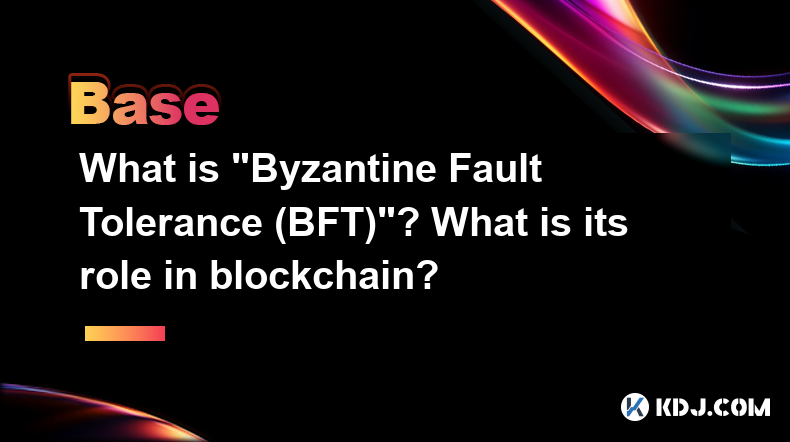-
 Bitcoin
Bitcoin $87,915.1013
4.01% -
 Ethereum
Ethereum $1,626.0336
3.05% -
 Tether USDt
Tether USDt $1.0002
0.03% -
 XRP
XRP $2.1225
3.25% -
 BNB
BNB $603.9394
2.51% -
 Solana
Solana $138.6104
1.03% -
 USDC
USDC $1.0000
0.01% -
 Dogecoin
Dogecoin $0.1612
4.65% -
 TRON
TRON $0.2431
-0.84% -
 Cardano
Cardano $0.6407
4.19% -
 Chainlink
Chainlink $13.4436
2.16% -
 Avalanche
Avalanche $20.5554
5.48% -
 UNUS SED LEO
UNUS SED LEO $9.0885
-2.49% -
 Stellar
Stellar $0.2597
7.37% -
 Toncoin
Toncoin $3.0010
0.25% -
 Shiba Inu
Shiba Inu $0.0...01257
1.68% -
 Sui
Sui $2.2420
6.60% -
 Hedera
Hedera $0.1711
4.33% -
 Bitcoin Cash
Bitcoin Cash $344.5133
3.21% -
 Polkadot
Polkadot $3.9101
1.15% -
 Hyperliquid
Hyperliquid $18.1893
5.38% -
 Litecoin
Litecoin $80.0892
5.05% -
 Bitget Token
Bitget Token $4.4777
1.97% -
 Dai
Dai $1.0000
0.00% -
 Ethena USDe
Ethena USDe $0.9994
0.01% -
 Pi
Pi $0.6362
1.91% -
 Monero
Monero $214.2887
-0.67% -
 Uniswap
Uniswap $5.4298
4.03% -
 Pepe
Pepe $0.0...07950
6.54% -
 Aptos
Aptos $5.1342
2.79%
What is "Byzantine Fault Tolerance (BFT)"? What is its role in blockchain?
BFT ensures blockchain security by achieving consensus among nodes, even with malicious actors, but faces scalability challenges as network size grows.
Mar 28, 2025 at 11:49 pm

Understanding Byzantine Fault Tolerance (BFT) in Blockchain
Byzantine Fault Tolerance (BFT) is a crucial concept in distributed systems, especially relevant to cryptocurrencies and blockchain technology. It addresses the challenge of maintaining agreement and consistency in a system where some participants might be malicious or behave unpredictably – much like the Byzantine Empire, where different generals might have conflicting orders or even betray their alliances. In essence, BFT algorithms ensure that the network continues to function correctly even if some nodes are faulty or actively trying to sabotage it. This is vital for maintaining the integrity and security of a blockchain.
How BFT Works: Achieving Consensus in a Decentralized World
BFT algorithms achieve consensus by employing sophisticated protocols to ensure that all honest nodes agree on the same state, despite the presence of malicious actors. These protocols typically involve multiple rounds of communication and verification among the nodes. The core principle is to design a system where the actions of faulty nodes cannot prevent the honest nodes from reaching a consensus. Different BFT algorithms exist, each with its strengths and weaknesses regarding efficiency and security. The choice of a specific algorithm depends on the specific requirements of the blockchain network.
The Role of BFT in Blockchain Consensus Mechanisms
The most prominent role of BFT in blockchain is within its consensus mechanisms. Consensus mechanisms are crucial for validating transactions and adding new blocks to the blockchain. Without a robust consensus mechanism, the blockchain would be vulnerable to attacks and inconsistencies. Several popular consensus mechanisms leverage BFT principles, including Practical Byzantine Fault Tolerance (PBFT) and its variations. These mechanisms ensure that the network can reach agreement on the valid state of the blockchain even in the presence of malicious or faulty nodes.
Practical Byzantine Fault Tolerance (PBFT) Explained
PBFT is a well-known BFT algorithm that's often cited in the context of blockchain. It works by having a designated primary node that proposes new blocks, and then other nodes vote on the validity of these blocks. The algorithm ensures that even if a significant portion of the nodes are faulty, the honest nodes can still reach a consensus. However, PBFT has limitations in scalability, making it less suitable for large-scale public blockchains. Its complexity and communication overhead limit its practical application to smaller, more controlled networks.
Other BFT Algorithms and their Applications in Blockchain
Beyond PBFT, other BFT algorithms have been developed and adapted for use in blockchain. These algorithms often aim to improve scalability and efficiency while maintaining the security guarantees of BFT. Some of these algorithms include variations of PBFT, as well as entirely new approaches designed to address the specific challenges of blockchain networks. The choice of a specific algorithm is a critical design decision, impacting the network's performance, security, and scalability.
BFT and the Security of Blockchain Networks
The security of a blockchain network heavily relies on its ability to withstand attacks. BFT plays a critical role in this security by ensuring that the network can reach consensus even when some nodes are compromised. This resistance to malicious attacks is a key feature that differentiates blockchain from centralized systems, which are vulnerable to single points of failure. By using BFT, blockchain networks can maintain their integrity and reliability even under duress.
Scalability Challenges with BFT in Blockchain
While BFT offers robust security, it often presents challenges in scalability. The communication overhead required for achieving consensus can increase significantly with the number of nodes in the network. This can lead to slower transaction processing speeds and higher latency. Many research efforts are focused on developing more scalable BFT algorithms that can handle the demands of large-scale blockchain networks. Finding the right balance between security and scalability remains a key challenge in the field.
The Future of BFT in Blockchain Technology
The evolution of BFT algorithms continues to be a hot topic of research and development within the cryptocurrency space. Researchers are exploring new approaches to improve the scalability and efficiency of BFT while maintaining its strong security guarantees. The future of blockchain technology is likely to see further advancements in BFT, enabling the creation of more robust, scalable, and secure decentralized systems. This ongoing research is essential for the widespread adoption of blockchain technology across various industries.
Understanding the nuances of different BFT implementations
Different blockchain projects employ different BFT implementations, each tailored to their specific needs and architecture. This means understanding the intricacies of a specific project's BFT implementation is crucial for a complete understanding of its security and performance characteristics. Not all BFT implementations are created equal; some are more efficient, secure, or scalable than others.
The importance of rigorous testing and auditing of BFT implementations
Given the critical role of BFT in ensuring blockchain security, rigorous testing and independent audits are paramount. These processes help identify potential vulnerabilities and ensure the robustness of the implementation. Thorough testing and auditing build trust and confidence in the security of the blockchain network. This is especially important for projects handling significant value or sensitive data.
How BFT contributes to the decentralization of blockchain
BFT is fundamental to the decentralization of blockchain. By enabling consensus even in the presence of faulty or malicious nodes, BFT prevents any single entity from controlling the network. This inherent resistance to centralization is a key strength of blockchain technology and a core tenet of its philosophy. BFT's contribution to decentralization is a major factor in its importance within the cryptocurrency ecosystem.
Exploring the trade-offs between security, scalability, and efficiency in BFT
Implementing BFT involves careful consideration of trade-offs between security, scalability, and efficiency. Increasing security often comes at the cost of reduced scalability or efficiency, and vice versa. Finding the optimal balance is a crucial design consideration for any blockchain project utilizing BFT. The specific trade-offs will vary depending on the chosen algorithm and its implementation.
The impact of network size on BFT performance
The size of the network significantly impacts the performance of BFT algorithms. Larger networks generally require more communication and computational resources to reach consensus, potentially leading to slower transaction processing times. This scalability challenge is a key area of ongoing research and development in the field of BFT. Efficient solutions for large-scale networks are crucial for the future of blockchain technology.
Frequently Asked Questions
Q: What is the difference between Proof-of-Work (PoW) and BFT consensus mechanisms?
A: PoW relies on computational power to validate transactions, while BFT achieves consensus through communication and voting among nodes. PoW is more decentralized but less efficient, while BFT is more efficient but potentially less decentralized depending on the implementation. PoW is energy-intensive, whereas BFT aims for lower energy consumption.
Q: Can BFT be used in all types of blockchain networks?
A: While BFT is applicable to many blockchain networks, its suitability depends on the specific requirements of the network, such as scalability and security needs. Larger public blockchains might find PoW or other consensus mechanisms more suitable due to scalability concerns.
Q: What are the limitations of BFT?
A: BFT algorithms can face scalability challenges as the number of nodes increases, leading to slower transaction processing times. The communication overhead can become significant, impacting performance. Additionally, the complexity of implementation can be high.
Q: Is BFT completely secure against all attacks?
A: No system is perfectly secure. While BFT significantly improves resilience against malicious attacks, sophisticated attacks might still be possible, particularly if a large fraction of nodes are compromised. The security of a BFT system depends heavily on the correct implementation and the proportion of honest nodes in the network.
Q: How does BFT contribute to the immutability of a blockchain?
A: BFT contributes to immutability by ensuring that all honest nodes agree on the same sequence of blocks. This consensus makes it extremely difficult to alter past transactions or the blockchain's history. This agreement is achieved even in the presence of faulty or malicious nodes.
Disclaimer:info@kdj.com
The information provided is not trading advice. kdj.com does not assume any responsibility for any investments made based on the information provided in this article. Cryptocurrencies are highly volatile and it is highly recommended that you invest with caution after thorough research!
If you believe that the content used on this website infringes your copyright, please contact us immediately (info@kdj.com) and we will delete it promptly.
- Atok Partners with Bitgert to Advance Infrastructure and Advertising Economy in Web3 World
- 2025-04-21 23:00:13
- Pi Network (PI) Coin Could Be the Next Cryptocurrency to Launch an Exchange Traded Fund (ETF)
- 2025-04-21 23:00:13
- Strategy, the world's largest corporate Bitcoin holder, has purchased 6,556 BTC for $555.8 million
- 2025-04-21 22:55:13
- Bitcoin (BTC) Price Prediction: Arthur Hayes Hints at a Final Opportunity to Buy BTC Under $100K
- 2025-04-21 22:55:13
- Binance Adds ZORA to Spotlight Projects on Binance Alpha Alongside Other Names
- 2025-04-21 22:50:12
- Bitcoin (BTC) Price Prediction: BTC Surges Nearly 5%
- 2025-04-21 22:50:12
Related knowledge

Recommended top ten spot digital virtual currency trading platforms in the world in 2025
Apr 21,2025 at 05:15pm
Recommended top ten spot digital virtual currency trading platforms in the world in 2025 1. Binance As the world's premier cryptocurrency trading platform, Binance is known for its extensive trading pairs and efficient trading services. Its features include: High Liquidity : Binance has huge trading volumes, ensuring users can trade at the best pric...

Ranking of top ten virtual currency trading apps in the currency circle (the latest authoritative list in 2025)
Apr 21,2025 at 10:28pm
The top ten virtual currency trading apps in the 2025 cryptocurrency circle are listed as follows: 1. Binance Binance is one of the world's leading cryptocurrency trading platforms, known for its efficient trading system and extensive currency support. Binance's user interface is designed with simplicity and is suitable for beginners and profess...

What are the digital currency APP trading software in 2025? Ranking of the top ten digital virtual currency trading apps
Apr 21,2025 at 08:42pm
Ranking of the top ten digital virtual currency trading apps in 2025 1. Binance Binance continues to maintain its position as the world's leading digital currency trading platform in 2025. Its advantages include: Efficient trading volume : Binance has top trading volumes around the world, ensuring users can trade efficiently at any time. Diverse tra...

The top ten virtual currency trading app professional list of the three major virtual currency trading platforms in the currency circle in 2025
Apr 21,2025 at 11:21pm
Three virtual currency trading platforms in the currency circle 1. Binance As one of the world's leading cryptocurrency trading platforms, Binance has rapidly risen since its establishment in 2017 due to its huge trading volume and extensive user base. Binance's success stems from its rich trading pairs and high liquidity, but also from its cont...

Ranking of the top ten cryptocurrency trading apps in the currency circle in 2025
Apr 21,2025 at 08:49pm
Ranking of the three major virtual currency trading applications in the currency circle Binance: The world's leading cryptocurrency trading platform Binance has always been one of the pioneers in the cryptocurrency trading world. With its huge trading volume and a wide user base, it has become one of the most popular trading platforms in the world. ...

Top 10 best virtual currency trading platforms in the world ranked latest rankings for 2025
Apr 21,2025 at 10:00pm
Top 10 Most Popular Virtual Currency Trading Platforms in the World 1.Binance Binance is one of the world's leading cryptocurrency trading platforms, and is popular for its high liquidity and rich trading pairs. Binance supports over 500 cryptocurrencies and provides fiat currency deposit and cash withdrawal services. The platform interface is user-...

Recommended top ten spot digital virtual currency trading platforms in the world in 2025
Apr 21,2025 at 05:15pm
Recommended top ten spot digital virtual currency trading platforms in the world in 2025 1. Binance As the world's premier cryptocurrency trading platform, Binance is known for its extensive trading pairs and efficient trading services. Its features include: High Liquidity : Binance has huge trading volumes, ensuring users can trade at the best pric...

Ranking of top ten virtual currency trading apps in the currency circle (the latest authoritative list in 2025)
Apr 21,2025 at 10:28pm
The top ten virtual currency trading apps in the 2025 cryptocurrency circle are listed as follows: 1. Binance Binance is one of the world's leading cryptocurrency trading platforms, known for its efficient trading system and extensive currency support. Binance's user interface is designed with simplicity and is suitable for beginners and profess...

What are the digital currency APP trading software in 2025? Ranking of the top ten digital virtual currency trading apps
Apr 21,2025 at 08:42pm
Ranking of the top ten digital virtual currency trading apps in 2025 1. Binance Binance continues to maintain its position as the world's leading digital currency trading platform in 2025. Its advantages include: Efficient trading volume : Binance has top trading volumes around the world, ensuring users can trade efficiently at any time. Diverse tra...

The top ten virtual currency trading app professional list of the three major virtual currency trading platforms in the currency circle in 2025
Apr 21,2025 at 11:21pm
Three virtual currency trading platforms in the currency circle 1. Binance As one of the world's leading cryptocurrency trading platforms, Binance has rapidly risen since its establishment in 2017 due to its huge trading volume and extensive user base. Binance's success stems from its rich trading pairs and high liquidity, but also from its cont...

Ranking of the top ten cryptocurrency trading apps in the currency circle in 2025
Apr 21,2025 at 08:49pm
Ranking of the three major virtual currency trading applications in the currency circle Binance: The world's leading cryptocurrency trading platform Binance has always been one of the pioneers in the cryptocurrency trading world. With its huge trading volume and a wide user base, it has become one of the most popular trading platforms in the world. ...

Top 10 best virtual currency trading platforms in the world ranked latest rankings for 2025
Apr 21,2025 at 10:00pm
Top 10 Most Popular Virtual Currency Trading Platforms in the World 1.Binance Binance is one of the world's leading cryptocurrency trading platforms, and is popular for its high liquidity and rich trading pairs. Binance supports over 500 cryptocurrencies and provides fiat currency deposit and cash withdrawal services. The platform interface is user-...
See all articles






















































































